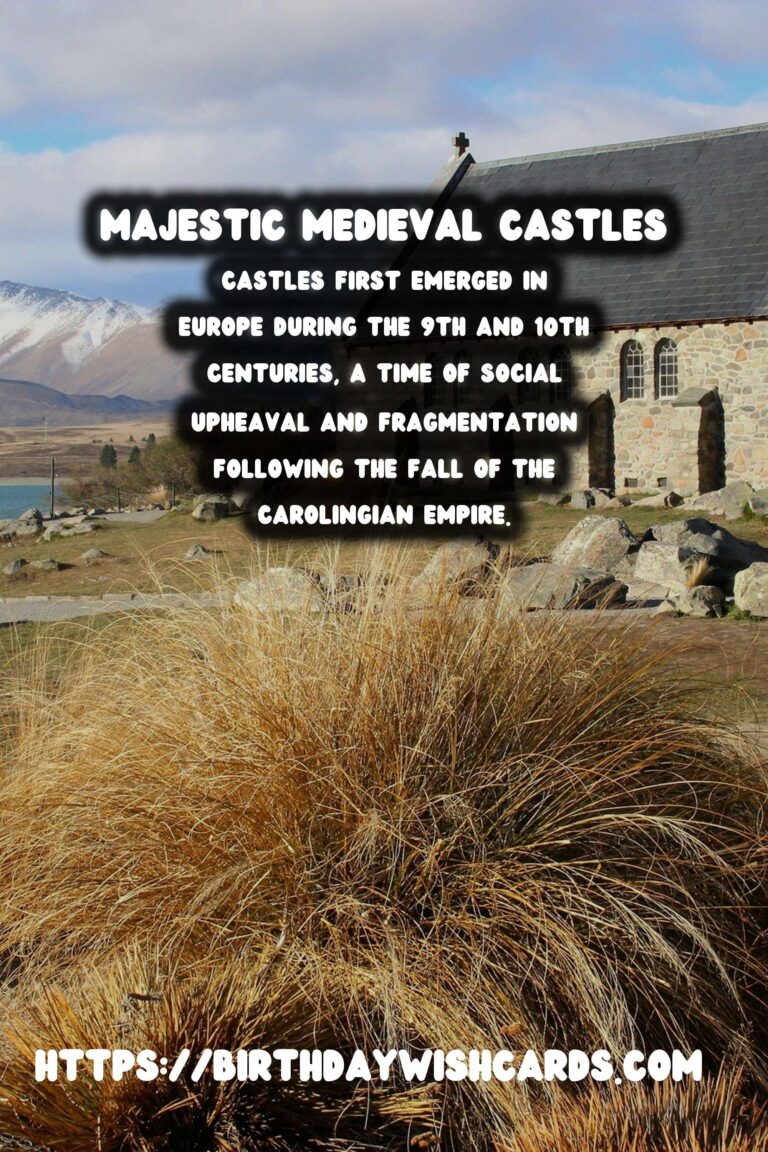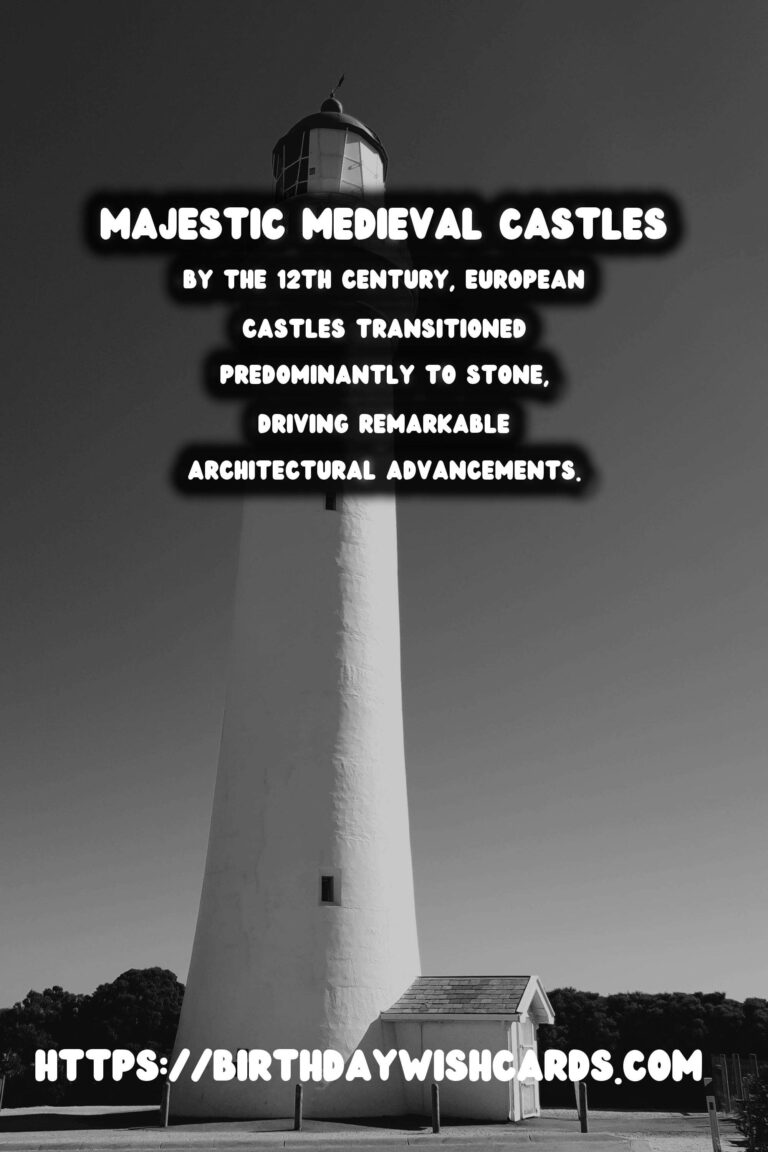
The stories told by castles are often grand tales of power and conquest, of feudal lords and medieval knights. These structures, renowned for their robustness and formidable presence, have captured our imagination through centuries. In this article, we delve into the architectural history of castles, exploring their evolution and eventual decline.
The Origins of Castle Architecture
Castles first emerged in Europe during the 9th and 10th centuries, a time of social upheaval and fragmentation following the fall of the Carolingian Empire. These early castles were born out of the necessity for defense, control, and feudal authority. Typically constructed on elevated ground, early castles began with wooden structures and motte-and-bailey designs offering strategic advantage and protection.
Motte-and-bailey castles consisted of a wooden or stone keep placed on a raised mound (motte), accompanied by an enclosed courtyard (bailey), surrounded by a protective ditch and palisade. As threats evolved, so did the architecture, leading to the adoption of stone which provided greater durability and defense.
Medieval Castle Design
By the 12th century, European castles transitioned predominantly to stone, driving remarkable architectural advancements. Shell keeps, with circular stone walls surrounding the motte, replaced timber structures, and massive curtain walls provided robust barriers. In addition to improving defenses, the design focused on accommodating domestic functions and asserting the lord’s status.
The development of concentric castles marked a significant advancement, offering multiple layers of defense. These castles, epitomized by the design of Edward I’s Beaumaris Castle, featured an inner and an outer wall, providing formidable fortification against siegers. Towers, drawbridges, and moats became standard features during this period, enhancing security and intimidation.
Architectural Refinements and Influences
Between the 13th and 15th centuries, castle architecture evolved further under the influence of Gothic aesthetic elements. As the notion of chivalry grew, castles not only served as military bastions but also as noble residences with elaborate halls, private chambers, and chapels. The importation of the machicolation, crenellation, and arrow slits from Crusader fortifications in the Holy Land increased the defensive capabilities of castles.
Despite these advances, the introduction of gunpowder in the late medieval period initiated the decline of traditional castle architecture. Cannons could breach even the thickest stone walls, rendering many castles obsolete as military strongholds.
The Decline of Castles
The Renaissance era marked the beginning of the decline of the classic castle as the emphasis shifted from military function to aesthetic and residential purposes. Fortresses evolved into ornate chateaus and facades adorned with artistic motifs reflecting wealth and power rather than only defense.
During the 16th and 17th centuries, the construction of star forts with angled bastions catered to modern artillery warfare, overshadowing traditional castles. As monarchs centralized power, the role of knights and feudal lords diminished, further reducing the need for defensive castles and driving the construction of opulent palaces.
The Legacy of Castles Today
While many castles fell into disrepair, others stood the test of time, undergoing restoration and transformation into cultural heritage sites. Their architectural diversity—from the romantic ruins of Scotland to the fairy-tale castles of Bavaria—provides insight into social, political, and technological trends that shaped Europe over the centuries.
Today, these iconic stone giants continue to fascinate, serving as sources of inspiration and storytelling through literature, films, and tourism.
Conclusion
The architectural history of castles is a testament to human ingenuity and adaptability. As they transitioned from wooden fortifications to stone masterpieces, castles adapted to the changing demands of warfare, governance, and lifestyle. Though their military role has subsided, their cultural legacy remains secure.
Castles first emerged in Europe during the 9th and 10th centuries, a time of social upheaval and fragmentation following the fall of the Carolingian Empire. By the 12th century, European castles transitioned predominantly to stone, driving remarkable architectural advancements.
#Architecture #History

